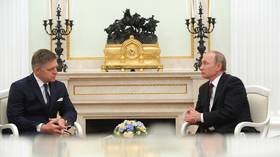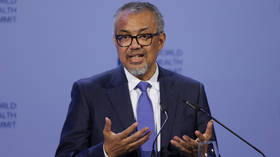Unemployment rate on the rise for the first time in two years

The unemployment rate in the United States jumped to 7.6 percent last month, up one-tenth of a point from April when the jobless figures were at the lowest since President Barack Obama first took the oath of office.
The US Department of Labor released its newest unemployment figures on Friday, and economists say the latest report is neither promising nor a sign to start panicking.
The news does, however, demonstrate that the previously
diminishing percentage of American workers filing jobless benefit
claims is again on the rise, even after months of that statistic
slowly dwindling from roughly one-out-of-ten down to a comparably
meager 7.5 percent. May's report marks the first time that the
unemployment rate has actually gone up since June 2011.
According to the Labor Department statistics published every month, unemployment at the dawn of the Obama presidency in Jan. 2009 was at 7.8 percent. That number pinnacled later that year when it clocked in at 10 percent in October, but has been declining steadily in the months and years since. Numbers have been dropping from 9 percent since late 2011, hitting an administration low last month at 7.5 percent.
Figures for May 2012 mark the first time that the unemployment rate has gone up since September 2011. Economists polled by Fox News expected the figure to stay stagnant at 7.5 percent.
That isn’t to say the latest report is all bad news, though. Employers added around 175,000 jobs to their payrolls in the month of May — or roughly the average of what was seen month-by-month during the last year.
Given the federal cutbacks that started earlier this spring due to the sequester, economists feared that numbers would be even more dire than what the new report revealed. Around 14,000 federal jobs were lost last month, likely the direct result of the spending cuts that were approved by Congress and went into effect this past March. A wave of furloughs is expected to hit civilian Defense Department workers and other federal employees this summer, likely causing a snag in any effort at a rebound from this month’s figures.
The manufacturing sector also shed around 8,000 jobs last month, and figures for March and April were downgraded to reflect 12,000 fewer jobs than originally thought. According to the report, job gains occurred last month in the retail, food and beverage sectors, as well with professional and business services.
And although economists aren’t welcoming the report with open arms, it could in fact be much worse. That’s the attitude most expect the Federal Reserve to take, which is now unlikely to take a new course of action in an attempt to revive the figures.
“It’s a decent report, but it’s not by any means robust,” Conrad DeQuadros, senior economist at RDQ Economics, told the New York Times. “It’s certainly not strong enough to get the Fed to make any significant changes at its meeting in June.”
The US has found itself increasingly turning to Federal Reserve Chairman Ben Bernanke, especially in the wake of the crippling recession that the country still struggles to fully rebound from. Questions have amounted in recent months as to whether Bernanke will continue the latest trend of quantitative easing — a bond purchasing program overseen by the central bank meant to revive the economy — but the newest figures suggest no new course of action will be unveiled anytime soon.
“The long and short of the May employment report is that it should put to rest any notion the economy is going into a swoon as it did last year–and with that tapering talk stays on the table,” Steve Blitz, ITG Investment Research’s chief economist, added to Bloomberg. “From a policy perspective, the Fed may indeed keep up the taper talk not because the economy is booming but precisely because it isn’t.”
“Today’s report did not provide additional clarity on whether the Fed’s tapering of its asset purchase is a few months away as expected by many market participants,” Fannie Mae Chief Economist Doug Duncan added to their report.














